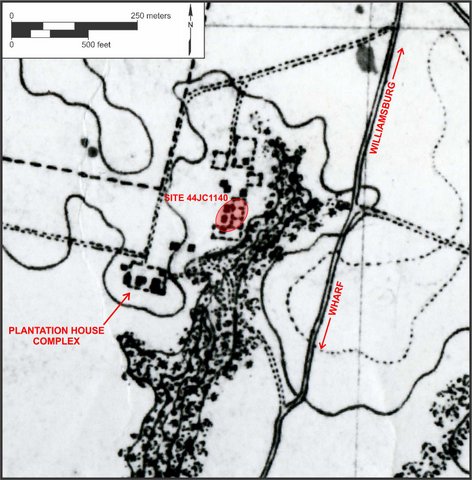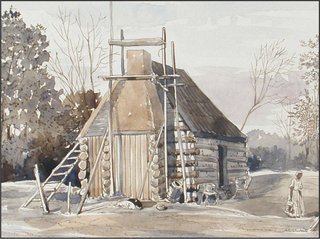Antebellum Slave Quarter
|
In the first half of the 19th century, William Allen owned the property but lived on his estate at Claremont in Surry County. A farm manager who lived in the old Burwell plantation house was responsible for Kingsmill as well as other properties that Allen owned in James City County. After the 18th-century mansion burned in 1844, the manager moved into a smaller wooden house built directly on top of the old foundation. No detailed maps of the area survive from the period 1800-1840s, when enslaved workers first lived in the cabins at Site 44JC1140. A chart of the James River with landward areas surveyed in 1873 (right), however, shows the locations of individual cabins and fences in the area of the site. These likely represent surviving remnants of the antebellum slave quarter that was adapted by soldiers during the Civil War. The quarter for enslaved plantation workers was only 1,100 feet away from the manager’s dwelling. Directly across the ravine to the east was the old road connecting the Kingsmill wharf with Williamsburg and other parts of the plantation. Housing at the Kingsmill quarter probably resembled the log cabin in the image below. Since the log walls rested directly on the ground, such cabins are not as easily defined archaeologically as buildings with posts or foundations that left traces in the ground. Archaeological research on slave quarter sites over the last few decades, however, has revealed that subfloor pits or root cellars often were dug into the bare earth floors of these rudimentary dwellings and covered by wooden planks. Several such pit/cellar features were identified at Site 44JC1140. |
 |
 |














